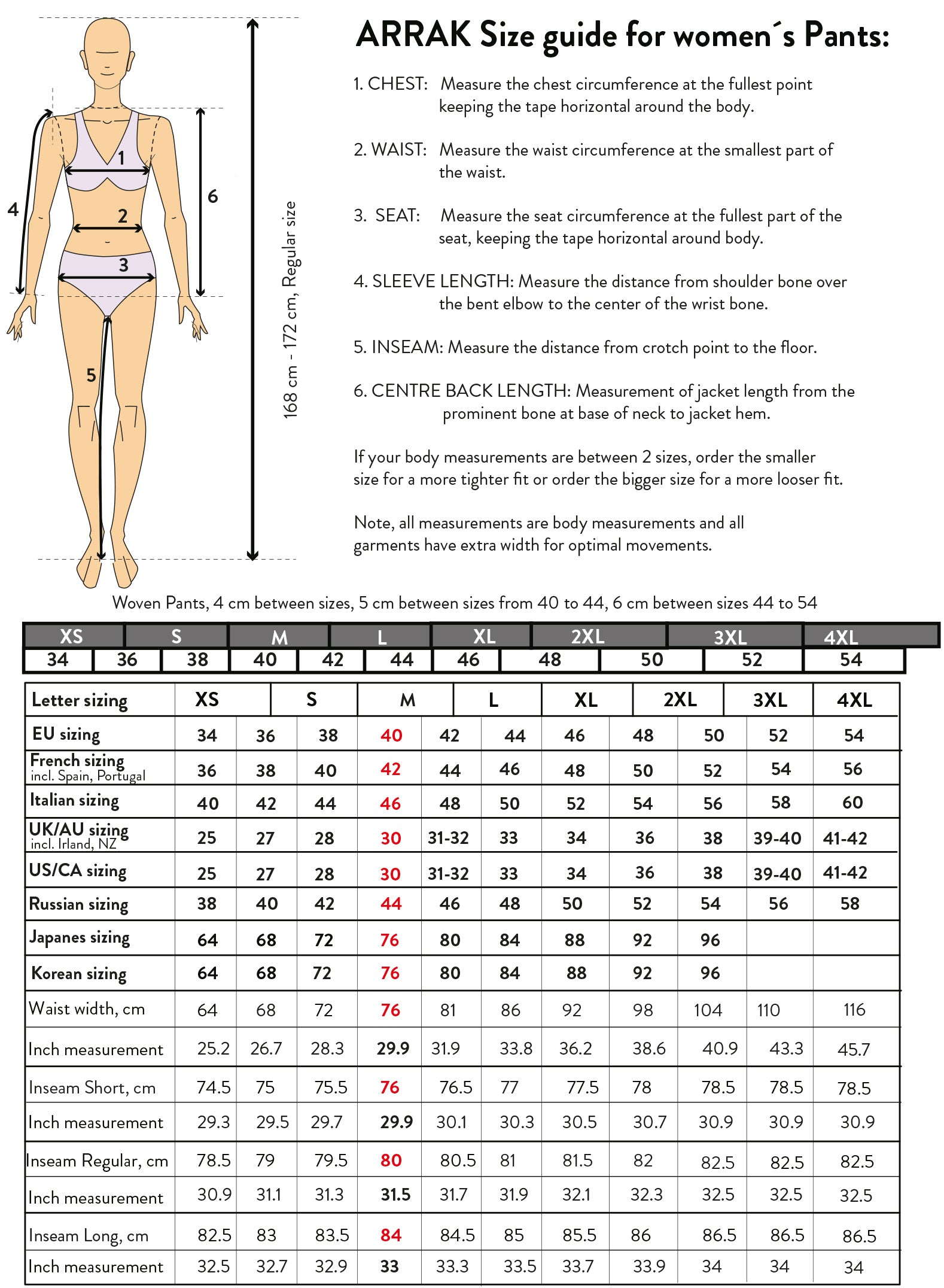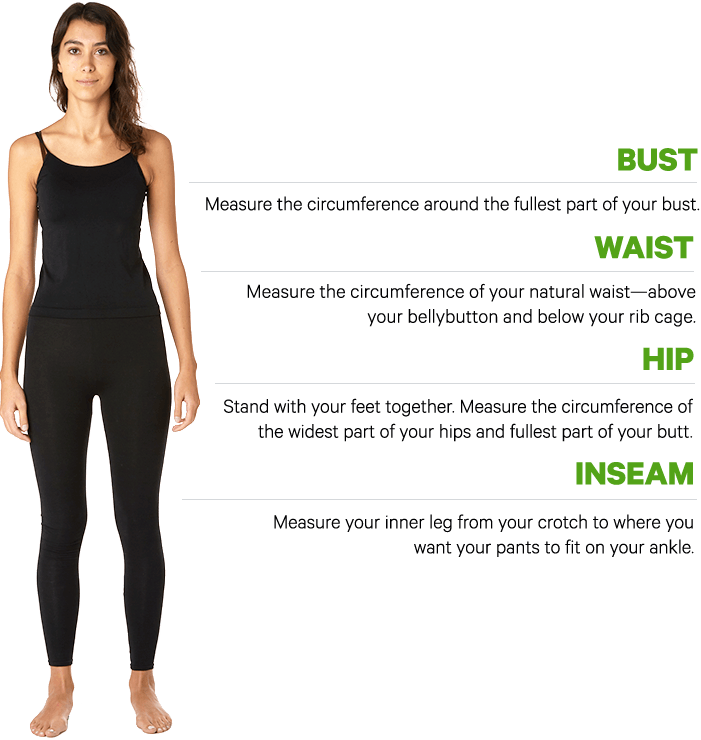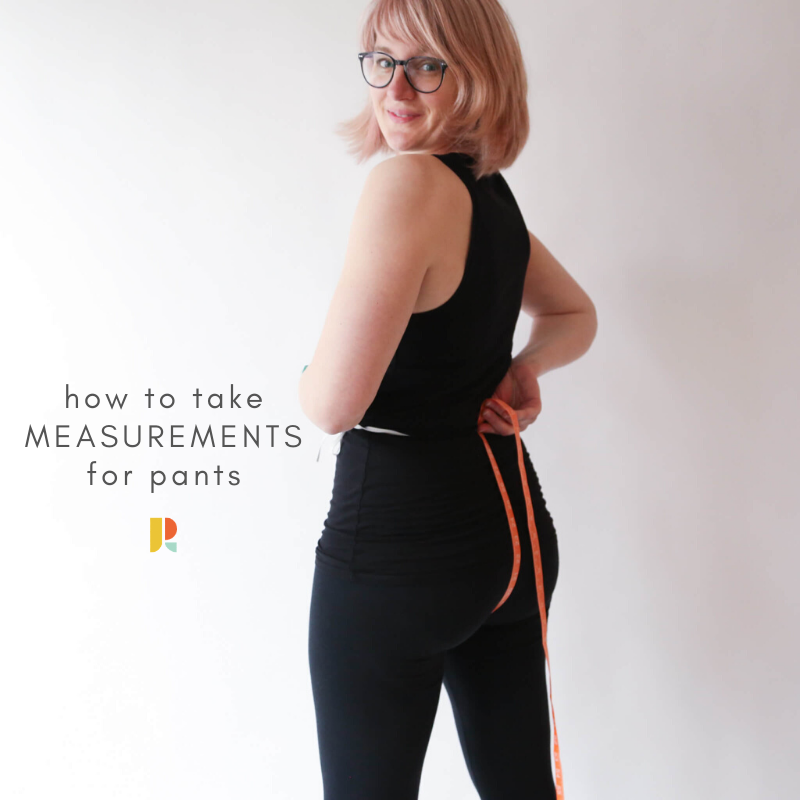To measure women’s pant size, measure the waist and hips at their widest points. Use these measurements to find the corresponding size on a size chart.
Finding the right pant size for women can be challenging. Accurate measurements ensure a better fit and comfort. Begin by measuring the waist, which is the narrowest part of the torso. Then, measure the hips at their widest point. Write these numbers down and refer to a size chart provided by the brand.
Different brands may have varying size charts, so always check. Using a soft measuring tape ensures accuracy. Proper measurements lead to better-fitting pants, enhancing comfort and appearance. Accurate sizing also reduces the hassle of returns and exchanges, saving time and effort.
Introduction To Women’s Pant Sizing
Finding the right pant size can be tricky. Women’s pant sizes vary by brand, style, and country. Understanding how to measure can make shopping easier.
Common Challenges In Finding The Perfect Fit
Many women face issues with pant sizing. Common problems include inconsistent sizes across brands. Another challenge is different body types. Some pants may fit the waist but not the hips.
Size charts can be confusing. They often use different units like inches or centimeters. Sometimes, pants shrink after washing, changing the fit.
Importance Of Accurate Measurements
Accurate measurements are crucial for a good fit. Using a tape measure helps you find your true size. Measure your waist, hips, and inseam.
Write down your measurements. Compare them with size charts. This helps you choose the right size.
Accurate measurements save time and reduce returns. They also help you feel more confident in your clothes.
| Measurement | Where to Measure |
|---|---|
| Waist | Measure around the smallest part of your waist. |
| Hips | Measure around the fullest part of your hips. |
| Inseam | Measure from the crotch to the bottom of the leg. |
Essential Tools For Measuring
Measuring women’s pant size accurately is crucial. Using the right tools makes a big difference. This section covers the essential tools needed for precise measurements.
Types Of Measuring Tapes
Not all measuring tapes are the same. Here are some types you might find useful:
- Flexible Tape Measure: Ideal for measuring curves.
- Retractable Tape Measure: Easy to carry around.
- Digital Tape Measure: Provides accurate digital readings.
Flexible tape measures are common. They are soft and easy to wrap around the body. Retractable tapes are compact and fit in your pocket. Digital tapes give you precise measurements with a digital display.
Alternative Measuring Methods
Sometimes, you might not have a tape measure. Here are some alternative methods:
- String and Ruler: Use a string to measure, then check with a ruler.
- Printable Measuring Tape: Print a tape from the internet.
- Body Scanner App: Use an app on your phone.
Using a string and ruler is simple. Wrap the string around the area you want to measure. Then, use a ruler to get the length. Printable measuring tapes are handy. You can download and print them. Body scanner apps use your phone’s camera to measure your body.
Using the right tools ensures accurate measurements. Accurate measurements lead to better fitting pants. Always double-check your measurements for the best results.
Key Measurement Points
Getting the right pant size for women is essential. Accurate measurements help in finding the perfect fit. Here are key measurement points to consider:
Waist Measurement Techniques
Measuring the waist correctly is crucial. Follow these steps:
- Stand up straight and relax.
- Find the narrowest part of your torso. This is your natural waist.
- Wrap the measuring tape around your waist. Ensure it is snug but not tight.
- Keep the tape parallel to the ground.
- Take the measurement at the end of your exhale.
Pro tip: Use a soft measuring tape for the best accuracy.
Hip Measurement Best Practices
Accurate hip measurements ensure a comfortable fit. Here’s how to measure:
- Stand with your feet together.
- Locate the fullest part of your hips. This is usually around the buttocks.
- Wrap the measuring tape around this area. Make sure it is level.
- Ensure the tape is snug but not pressing into your skin.
- Take the measurement at the widest point.
Pro tip: Measure in front of a mirror to ensure the tape is straight.
| Measurement | Key Points |
|---|---|
| Waist | Natural waist, relaxed, parallel tape |
| Hips | Fullest part, level tape, feet together |
Follow these steps to measure your waist and hips accurately. This ensures a perfect pant fit every time.
Step-by-step Guide To Measuring
Measuring women’s pant size can seem tricky. This guide makes it simple. Follow these steps to get accurate measurements. Start with the right tools and techniques. This ensures you get a perfect fit every time.
Preparing For Accurate Measurements
Preparation is key to getting the right measurements. Gather a flexible measuring tape and a notepad. Wear tight-fitting clothes or underwear. Stand straight and relaxed.
Ask a friend for help if possible. This ensures more accurate results. Make sure the tape measure is snug but not tight.
Recording Your Measurements Correctly
It’s important to record your measurements accurately. Use a table to keep things organized. Below is an example of a measurement table:
| Measurement Area | Inches | Centimeters |
|---|---|---|
| Waist | 28 | 71 |
| Hips | 38 | 97 |
| Inseam | 30 | 76 |
Measure your waist at the narrowest point. Record this measurement. Measure your hips at the widest point. Note this down too. Measure the inseam from the crotch to the ankle. Write this measurement as well.
Double-check each measurement for accuracy. This avoids errors. Use these measurements to find your pant size. Most size charts include these three key measurements.
Interpreting Size Charts
Choosing the right size can be confusing. Interpreting size charts helps you find the perfect fit. Understanding these charts makes shopping easier and stress-free.
Navigating Brand-specific Sizing
Each brand has its own sizing. This means a size 8 in one brand might be a size 10 in another. Always check the brand’s size chart before buying.
Here is a quick guide to help you:
- Visit the brand’s website.
- Find their size chart.
- Measure your waist, hips, and inseam.
- Compare your measurements to the size chart.
Measuring yourself accurately is key. Use a soft measuring tape for best results. Note your measurements and keep them handy.
Understanding International Sizing Differences
Sizes differ around the world. A US size 8 is not the same as a UK size 8. This table shows some common size conversions:
| US Size | UK Size | EU Size |
|---|---|---|
| 4 | 8 | 36 |
| 6 | 10 | 38 |
| 8 | 12 | 40 |
| 10 | 14 | 42 |
Always check the size chart for the country you are buying from. This ensures you get the correct fit.
Remember, not all brands use the same international sizes. Double-checking can save you from returns and exchanges.

Credit: arrakusa.com
Tips For Measuring At Home
Measuring your pant size at home is easy with the right tips. Follow these steps to get accurate and consistent measurements.
Solo Measurement Strategies
Measuring alone can be tricky, but with the right techniques, you can get accurate results.
- Use a Mirror: Stand in front of a full-length mirror. This helps ensure the measuring tape is straight.
- Mark the Tape: Use a marker to note the measurement. This helps if you can’t read the tape directly.
- Measure Multiple Times: Take each measurement at least twice. This ensures accuracy.
Ensuring Consistency In Measurements
Consistency is crucial for accurate pant sizes. Follow these tips for reliable results.
- Wear the Same Clothing: Measure yourself in similar clothing each time. This helps avoid variations.
- Measure at the Same Time of Day: Your body may change size throughout the day. Measure at the same time for consistency.
- Use the Same Measuring Tape: Different tapes can give different results. Stick to one tape for all measurements.
| Measurement | Tips |
|---|---|
| Waist | Measure at the narrowest part of your waist. |
| Hips | Measure at the widest part of your hips. |
| Inseam | Measure from the crotch to the bottom of the leg. |
Common Sizing Issues And Solutions
Understanding how to measure women’s pant size can be tricky. Many women face common sizing issues. This guide helps address these issues and offers simple solutions.
Adjusting For Different Body Shapes
Women have various body shapes. Each shape can impact pant sizing.
- Pear-shaped bodies: Choose pants with a wider hip and thigh area.
- Apple-shaped bodies: Opt for pants with a higher rise to cover the tummy.
- Hourglass bodies: Look for pants with a defined waist.
- Rectangle-shaped bodies: Seek pants with added curves, like bootcuts.
Select pants with stretch fabric for more comfort. This helps accommodate different shapes easily.
Dealing With In-between Sizes
Sometimes, you may fall between sizes. This can be frustrating.
Here are some tips to handle in-between sizes:
- Check Size Charts: Different brands have different size charts. Always refer to them.
- Consider Alterations: Slight alterations can make pants fit perfectly.
- Use a Belt: Belts can help adjust waist fit.
- Try Different Styles: Different styles fit differently. Try multiple styles to find the best fit.
If unsure, opt for the larger size. You can always adjust it later.

Credit: www.groupon.com
Leveraging Measurements For Online Shopping
Shopping for women’s pants online can be a challenge. One major issue is getting the right size. By knowing your exact measurements, you can improve your chances of a perfect fit. This guide will help you leverage measurements for a better online shopping experience.
Using Measurements To Choose The Right Size
Before you buy pants online, grab a measuring tape. Measure your waist, hips, and inseam. Write down these numbers. Most online stores provide a size chart. Compare your measurements with the chart. This helps you find the right size.
Here is how you measure:
- Waist: Measure around the smallest part of your waist.
- Hips: Measure around the fullest part of your hips.
- Inseam: Measure from the crotch to the bottom of the leg.
Using these measurements, you can avoid returns and exchanges. Always check the size guide of each brand. Sizes can vary between brands.
When To Consider Tailoring Options
Sometimes, even with the right measurements, pants may not fit perfectly. This is where tailoring can help. Tailoring adjusts the pants to fit your body shape.
Here are some scenarios where you might consider tailoring:
- You find the perfect pants, but the waist is too big.
- The length of the pants is too long or too short.
- The hips fit well, but the thighs are too tight.
A good tailor can make these adjustments. This ensures your pants fit perfectly. It can be worth the extra cost for a custom fit.
Remember, always buy pants that fit the largest part of your body. Tailors can take in pants, but they can’t let them out as much.
Maintaining Perfect Fit Over Time
Keeping your pants fitting perfectly over time is essential. It ensures comfort and style. As our bodies change, so should our wardrobe. This section will help you maintain a great fit.
Monitoring Changes In Body Size
Regularly check your body measurements. This helps in detecting changes early. Use a flexible measuring tape for accuracy.
| Body Part | How to Measure |
|---|---|
| Waist | Wrap the tape around your natural waistline. |
| Hips | Measure around the fullest part of your hips. |
| Inseam | Measure from the crotch to the bottom of your leg. |
Track these measurements every few months. Record them in a notebook or digital file. This will help you notice any changes and take action.
Updating Your Wardrobe Accordingly
Once you notice a change in measurements, update your wardrobe. This ensures that your pants fit perfectly.
- Donate pants that no longer fit.
- Purchase new pants that match your current size.
- Consider adjustable waistbands for future flexibility.
Keep a few basic styles in your wardrobe. This includes jeans, trousers, and leggings. This variety will keep you comfortable and stylish.
Check for sales and discounts. This can help save money while updating your wardrobe. Remember, a perfect fit boosts confidence and comfort.

Credit: www.pinterest.com
Conclusion
Finding the perfect pant size for women doesn’t have to be challenging. Use a measuring tape and size charts. Consider your body shape and preferences. This guide simplifies the process, ensuring a comfortable fit. Understanding these steps ensures you always choose the right size.
Happy shopping!




Leave a Reply